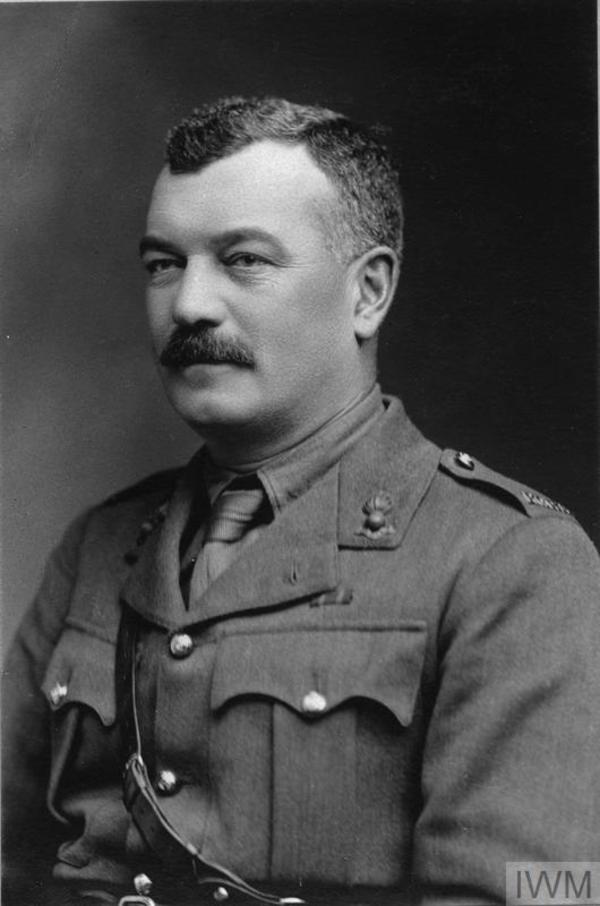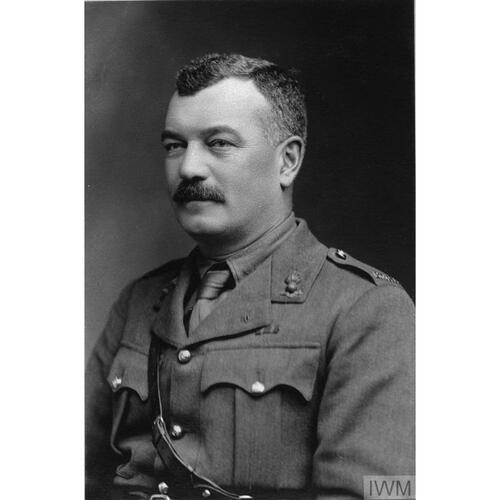
Source: Link
EATON, DANIEL ISAAC VERNON, civil engineer, surveyor, and militia and army officer; b. 19 Sept. 1869 in Salmon River, N.S., son of James Killer Eaton, a civil engineer, and Ann (Anna) King Pitblado; m. 7 Dec. 1898 Myra Fitz Randolph, daughter of Archibald Drummond Fitz Randolph*, in Fredericton, and they had two daughters; d. 11 April 1917 near Vimy Ridge, France.
Vernon Eaton was born and raised near Truro, N.S., and received his early education in local public schools and at Colchester Academy. Following in his father’s footsteps, he developed an early interest in engineering. He worked with the Newfoundland Railway in 1889–90 and, although he does not appear to have had any formal training in his field, he secured an appointment with the Geological Survey of Canada in the summer of 1890.
For the next six years Eaton devoted himself to geological surveying, topography, and exploration. Between 1893 and 1895 he accompanied geologist Albert Peter Low* on an ambitious project to prepare a complete survey of the Labrador peninsula. As Low’s assistant, he was responsible for mapping and meteorological observations and for drafting large portions of the final report. Although his future seemed secure, he resigned from the GSC on 20 July 1896 to pursue a long-standing interest in a military career.
Eaton had been a member of the militia as early as 1887 when still living at home. After he settled in Ottawa, his interest was rekindled and he joined the Ottawa Field Battery as a second lieutenant in 1892. Promoted lieutenant in 1894, he became captain in February 1896 and major four months later. In July, shortly before his resignation from the GSC, he was gazetted a lieutenant in the Permanent Force.
The South African War provided many Canadian military officers with valuable field experience and, more important, connections. Eaton was no exception. He first went overseas in January 1900 as a member of the Royal Canadian Artillery. Second in command of D Battery, he was seconded for special service with Major-General Robert Stephenson Smyth Baden-Powell at Mafeking in June-July 1900. Eaton returned to Canada in January 1901 and promptly offered to serve again when more troops were required the following year. He went back to South Africa, arriving after peace had been declared on 31 May, as second in command to Lieutenant-Colonel Victor Arthur Seymour Williams* of the 3rd Canadian Mounted Rifles. For his service in the war, Eaton was awarded the Queen’s South Africa Medal with three clasps. He was promoted captain in July 1902.
The war had been a good experience for Eaton and would determine the future course of his military career. Through diligence and hard work, he had come to the attention of Field Marshal Lord Roberts, who personally selected him as the first colonial officer to attend the Staff College at Camberley, England, in 1902. Three years later Eaton returned to Canada with the rank of major, and on 1 July 1905 he was appointed assistant director of operations and staff duties at the Department of Militia and Defence in Ottawa. In the spring of 1908 he succeeded to the position of director of military training. He reverted to regimental duty in January 1911 and assumed command of B Battery, Royal Canadian Horse Artillery, at Kingston, Ont.
The outbreak of World War I in 1914 provided Eaton with an opportunity to serve overseas once again. He joined the Canadian Expeditionary Force in January 1915, and by July he was commanding B Battery in France. Eaton returned to England in March 1916 when he was awarded command of the 8th Brigade, Canadian Field Artillery. Shortly thereafter he assumed temporary command of the 3rd Divisional Artillery. Promoted lieutenant-colonel in May, Eaton took the 8th Brigade to France in July and within a few short days was involved in actions in the Ypres salient. The following spring, on 8 April, the brigade was poised to take part in the bombardment of Vimy Ridge. Early in the evening Eaton was visiting his batteries near Berthonval Farm, and in an outburst of enemy fire he was severely wounded in the abdomen. He died of his wounds three days later, and was buried in the Barlin Communal Cemetery Extension.
Vernon Eaton was tall and handsome with steely grey eyes and a dark complexion. He was keenly aware of his Eaton family heritage and proudly wore a tattoo of the family crest on his right arm. Twice he was mentioned in dispatches for gallant and distinguished service in the field. In many ways he epitomizes the professional soldier in Canada in the period from the 1890s to World War I. With opportunities for training and for active service, Eaton carved out a promising career for himself as an experienced artillery officer of the first rank, only to lose his life on the eve of Canada’s greatest military achievement of the Great War.
Can., Dept. of National Defence, National Defence Headquarters, Directorate of Hist. (Ottawa), Doc.000.8 (D55). NA, RG 9, III, 8th Brigade, Canadian Field Artillery, war diary, 1–12 April 1917; RG 150, Acc. 1992–93/166. Daily British Whig (Kingston, Ont.), 14 April 1917. Truro Daily News (Truro, N.S.), 17 April 1917. Can., Dept. of Militia and Defence, Militia list (Ottawa), 1903, 1911, April 1913, January 1916; Parl., Sessional papers, 1891–97, reports of the auditor general, 1890/91–1896/97. Canada Gazette, January–June 1892: 2140; July–December 1896: 211; January–June 1902: 2565; July–December 1902: 723; July–December 1905: 278. Canadian men and women of the time (Morgan; 1912). A. W. H. Eaton, The Eaton family of Nova Scotia, 1760–1929 (Cambridge, Mass., 1929). Geological Survey of Canada, Annual report (Ottawa), new ser., 8 (1895)–9 (1896). G. W. L. Nicholson, The gunners of Canada; the history of the Royal Regiment of Canadian Artillery (2v., Toronto, 1967–72). Morris Zaslow, Reading the rocks: the story of the Geological Survey of Canada, 1842–1972 (Toronto and Ottawa, 1975).
Cite This Article
Glenn Wright, “EATON, DANIEL ISAAC VERNON,” in Dictionary of Canadian Biography, vol. 14, University of Toronto/Université Laval, 2003–, accessed January 12, 2026, https://www.biographi.ca/en/bio/eaton_daniel_isaac_vernon_14E.html.
The citation above shows the format for footnotes and endnotes according to the Chicago manual of style (16th edition). Information to be used in other citation formats:
| Permalink: | https://www.biographi.ca/en/bio/eaton_daniel_isaac_vernon_14E.html |
| Author of Article: | Glenn Wright |
| Title of Article: | EATON, DANIEL ISAAC VERNON |
| Publication Name: | Dictionary of Canadian Biography, vol. 14 |
| Publisher: | University of Toronto/Université Laval |
| Year of publication: | 1998 |
| Year of revision: | 1998 |
| Access Date: | January 12, 2026 |



